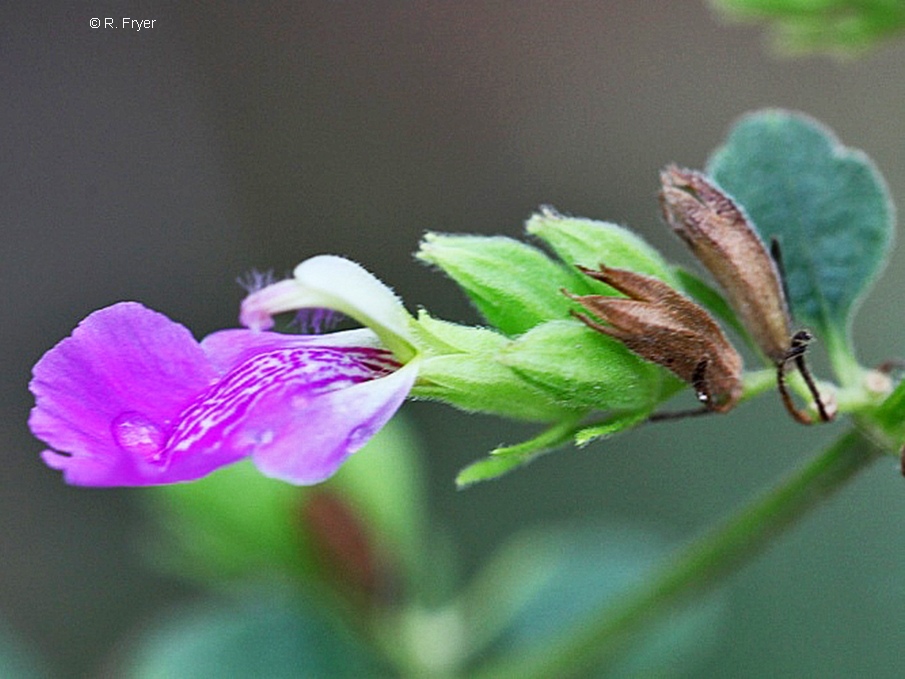Australian Tropical Rainforest Plants - Online edition
Anisomeles inodora R.Br.

Brown, R. (1810) Prodromus florae Novae Hollandiae 1802-1805: 503. Lectotype: "[Australia: Northern Territory]. Arnhem North Bay [Melville Bay], 14 February 1803, R. Brown s.n. [Bennett Number 2356] (lecto: BM 001041066; isolecto: BM 001041067, E 00649578)."
Leaf bearing stems 4-angled. Leaves on stems elliptic to ovate lanceolate, 38-115 mm long x 12-43 mm wide; margins crenate or serrate; base cuneate or attenuate; petioles 7-42 mm long; leaf blade upper and lower surfaces with sparse to moderately dense eglandular hairs that are erect or curved, sessile glands present.
Floral bracts leaf-like but abruptly becoming smaller, lanceolate or elliptic, 9-31 mm long x 3-11 mm wide, usually not longer than the inflorescence clusters (verticils). Inflorescence clusters spaced along rachis, usually not branched, with 3-14 flowers per axis (monochasium). Corolla tube longer than or equal to calyx. Corolla 2-lipped. Corolla platform (flattened upper side of the large lower corolla lip) hairless.
Features not available.
Description adapted from A.R.Bean (2015).
3655





